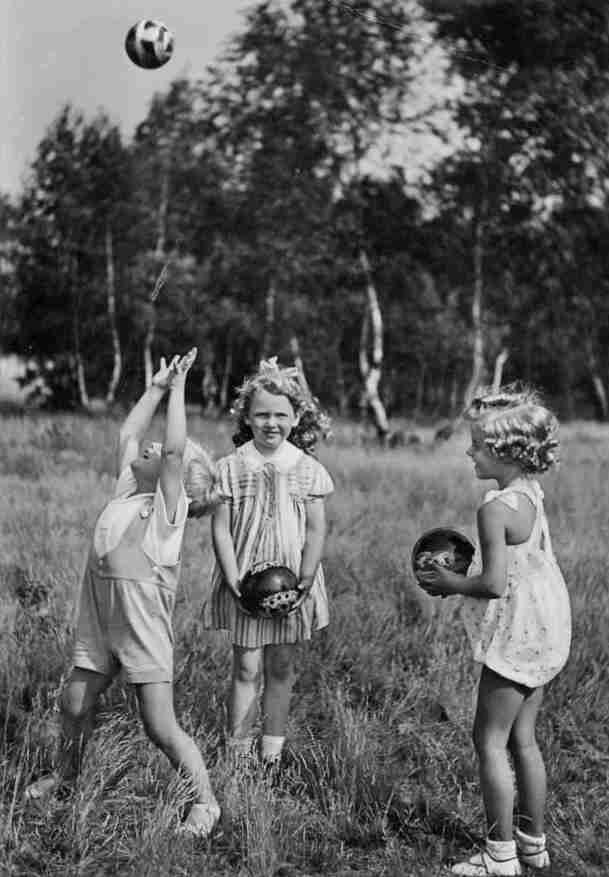
Figure 1.--Here we see German children playing in the 1940s. Note the little girl wearing rompers. In France only boys wore them in the 1940s. |

|
The most prevalent period for rompers in Germany seems to have been the World War II era. We note that in the early-1940s that French styles begin to appear. We noted a NAZI propaganda film made by Goebels at the Lake Wanderssee resort near Berlin in 1944 to try to prove how undisturned life in Berlin was by the war. One boy about 4 years old wears yellowish-colored rompers. This shows that rompers were worn in the 1940s. We have noted rompers in Germany before the 1940s, but they were not styled like French rompers. We believe this is becuse of German occupation policy in France. As a result of reprations and the grossly overvalued Deutsche Mark, large quantities of food and other consumer goods were shipped to the Reich. Among them was French clothing, including children's clothing. [HBC note: We are collecting information on the German occupation and the French Vichy Government.] These shipments may have not only have provided French fashions to German stores, but may have induced German manufacturers to produce rompers and other French styles. This probably explains why we see quite a number of German boys wearing French-styled clothes in the 1940s. Interestingly French fashions like berets or even speaking French were not permitted in Alsace and other French areas annexed to the Reich. We note German girls also wearing rompers in the 1930s and 40s. And older girls wore romper suits for school gym classes. In France only boys wore rompers. The German conventions seem more like the pattern in America. A reader writes, "I have not noted rompers in the photographs of German boys clothes before World War II (1939-45), but this may be due to HBC's still limited information on Germany. We have noted a boy wearing a romper at a beach resort during the War in the early 1940s. They were widely worn in France and Italy." Here I think our reader is referring to the fasionally cut French-style rompers and not the baddy knee-length rompers we note in the 1920s and 30s.
The most prevalent period for rompers in Germany seems to have been the World War II era. This is difficultvto assess with any certainty, but this is the impression that seems to be emerging. A reader writes, "I have not noted rompers in the photographs of German boys clothes before World War II (1939-45), but this may be due to HBC's still limited information on Germany. We have noted a boy wearing a romper at a beach resort during the War in the early 1940s. They were widely worn in France and Italy." Here I think our reader is referring to the fasionally cut French-style rompers and not the babby knee-length rompers we note in the 1920s and 30s. Romper wwee not by ahny measure the primary style for pre-school boys, but we do see a number of boys wearing, mostly for play and casual activities. We do not many examples of boys being dressed up in fancy romper outfits. Nor do we see boys wearing them to school.
We note that in the early-1940s that French styles begin to appear. We noted a NAZI propaganda film made by Goebels at the Lake Wanderssee resort near Berlin in 1944 to try to prove how undisturned life in Berlin was by the war. One boy about 4 years old wears yellowish-colored rompers. This shows that rompers were worn in the 1940s. We have noted rompers in Germany before the 1940s, but they were not styled like French rompers. We believe this is because of German occupation policy in France.
Germany invaded and occupied France during World Mar II (May-June 1940). As a result of reprations and the grossly overvalued Deutsche Mark, large quantities of food and other consumer goods were shipped to the Reich. Among them was French clothing, including children's clothing. [HBC note: We are collecting information on the German occupation and the French Vichy Government.] These shipments may have not only have provided French fashions to German stores, but may have induced German manufacturers to produce rompers and other French styles. This probably explains why we see quite a number of German boys wearing French-styled clothes in the 1940s.
Germany annexed Alasace-Loraine to the Reich. Interestingly French fashions like berets or even speaking French were not permitted in Alsace and other French areas annexed to the Reich. We see German boys wearing berets in other areas of the Reich, but not in the French annexed reas. We are less sure about other French-influenced fashions.
We note German girls also wearing rompers in the 1930s and 40s. This was something we do not see in France. Rompers were a boys garment in Framve. And older girls wore romper suits for school gym classes. In France only boys wore rompers. The German conventions seem more like the pattern in America.
Navigate the Boys' Historical Clothing German pages:
Return to the: [Main German romper chrnology page]
[German art]
[German choirs]
[German movies]
[German royalty]
[German school uniforms]
[German youth groups]
[German sailor suits]
[Lederhosen]
[Ethnic]
[Tights]
[Long stockings]
Navigate the Boys' Historical Clothing Web Site:
[Introduction]
[Activities]
[Biographies]
[Chronology]
[Clothing styles]
[Countries]
[Bibliographies]
[Contributions]
[Essays]
[FAQs]
[Glossaries]
[Images]
[Links]
[Registration]
[Tools]
[Boys' Clothing Home]
